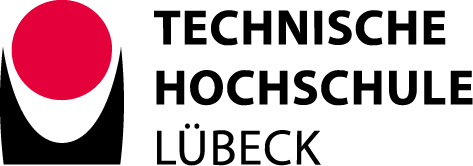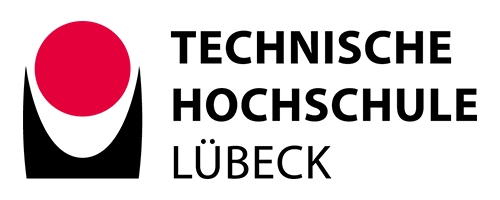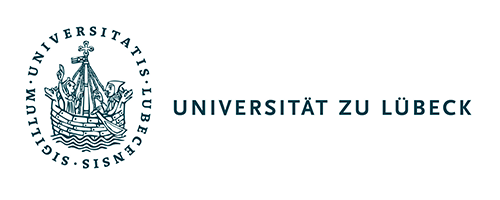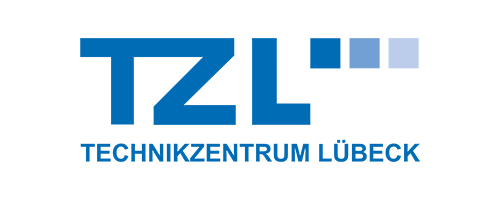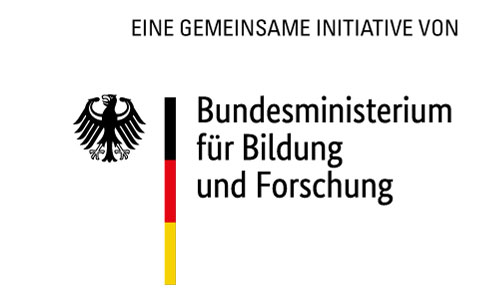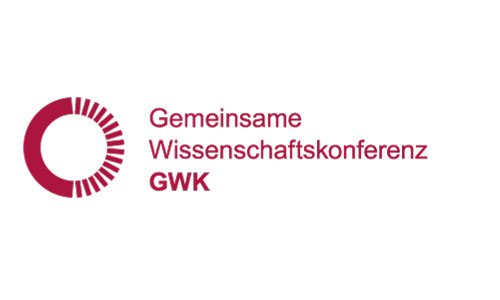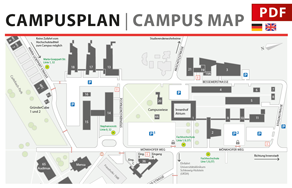HI Lübeck
Hansebelt Innovation Matrix Lübeck
| Duration: | 01.07.2023 - 31.12.2027 |
| Project Leader: | Prof. Dr.-Ing. Horst Hellbrück |
| Staff: | Swen Leugner, M.Sc.; Orsolya Pragay-Szabo, Dipl.-Öko. |
Background

The Hanse Innovation Campus (HIC) Lübeck is an existing network of science, research and technology transfer institutions, supported by the University of Lübeck (UzL) and the Lübeck University of Applied Sciences (THL). It is characterized by close cooperation between different institutions such as universities, research centers, the Technology Centre (TZL) and the University Hospital (UKSH). In a cross-campus realignment process, it is set to become the central innovation driver for the entire Hansebelt region. Between Hamburg and Copenhagen, the Hansebelt region connects two of the smartest metropolitan areas in Northern Europe. With the Hanseatic city of Lübeck at its center, it is not only the gateway to the growth markets in the Baltic Sea region, but also part of the Hamburg metropolitan region with optimal access to the global markets.
The HIC Lübeck is to become a digital and real place. It provides space for exchange, questioning and thinking differently and together. Through recursive exchange, science, business and society will work together to find solutions to complex social challenges in the region and beyond. In this way, the HIC Lübeck will make a significant contribution to the further development of the regional innovation system and at the same time continuously sharpen its own profile. The starting point for the realignment was the first application to the Innovative University 2018 funding initiative. The application concept of a Lübeck knowledge, ideas and technology transfer alliance HL-WITAL, which makes the expertise of universities and research institutions available to the region, is still valid for us. This was the starting point for the strategic realignment of the campus. The basis for the realignment is the joint transfer audit by the Stifterverband (2019) and the resulting new transfer strategy for both universities.
In order to implement the objectives of the joint transfer strategy, this joint application by the two universities is intended to create a Hansebelt Innovation Matrix Lübeck - HI LÜBECK, under the leadership of Prof. Frank Schwartze, Vice President for Research and International Affairs at the THL. Through the Innovative University II funding initiative, the science and technology location HIC Lübeck is to be closely and strategically networked with the Hansebelt region on a structural and long-term basis. The aim is to make the knowledge of the campus available for concrete user applications, i.e. innovations for transformation, for four thematic sub-projects (so-called focus areas) of the Hansebelt region in order to further develop the competitiveness and future viability of the region.
Objective and Approach
HI Lübeck initiates, develops and supports innovations for transformations in the Hansebelt region and tests new transfer formats that ensure a lasting connection between the campus and the region. Thematically, the focus is on the challenges and requirements of the digital transformation in the regional economy and the transformation to a more sustainable economy and society.
HIC Lübeck has broad expertise in research and development in the fields of digital technologies, artificial intelligence, health technologies and the economy and environment. HIC Lübeck's expertise is networked internally using the innovation matrix approach. And under the leitmotif of intelligent transformation, knowledge generated through the use of artificial intelligence and digital applications is applied externally in line with the needs and challenges of the Hanseatic region. The application relevance and impact of the project are ensured by the consistent focus on integrated cooperation with existing clusters and networks in the region.
In line with the recursive transfer approach of the funding initiative, these needs are bundled and convey approaches for trans- and interdisciplinary transfer in the Hansebelt region.
The content of the project will be implemented in four focus areas: Nutrition/Bioeconomy; Intelligent Health, Energy/Smart City and Producing Tomorrow.
The structural implementation takes place in three new transfer formats, which contribute to developing technological innovations, facilitating brain transfer and identifying new topics and finding solutions through collaborative learning: The Joint School of Digital Transformation, presented as Campus Schools in the transfer strategy, the Campus Platform and the Center for Transfer and Exchange (ZTA), presented as Campus Center in the transfer strategy. The overarching management and implementation of the project is based on the established structures of science and technology transfer (STT) on campus, united in the HIC Lübeck, in order to activate it as an interface between the campus and the region and make it transparent.
Scientific and technical goals of the project
The concept of the matrix enables the development and implementation of specific innovative transfer formats at the interface of the three structural sub-projects and the four thematic sub-projects as focus areas. This creates a structuring and qualitative framework for the project. Each of the associated sub-projects has its own content-related, strategic and qualitative objectives and measures. As the core of the project, the matrix is explicitly designed so that measures can be implemented both horizontally - interdisciplinary and cross-thematic - and vertically - transdisciplinary and cross-structural - in an exchange.
This principle is intended to implement transfer in a learning system that transcends sectoral boundaries and enables transdisciplinarity as an essential prerequisite for innovation and transformation. The conceptual model for the three horizontally linked, structurally designed sub-projects is the idea of a new type of university - a transfer university. The basis is the "campus as a platform". The sub-project "Campus as a platform" will create the structural and technical prerequisites for making laboratories and technical facilities with the associated scientific expertise of the campus available for transfer-oriented applications with business partners. The specific implementation will take place in the four thematic focus areas.
The real "Campus as a platform" is mirrored by the development of the "Campus as a digital platform", initially for the four thematic focus areas, as the future digital basic infrastructure of HIC Lübeck. In this way, the expertise of the campus in the fields of artificial intelligence and digital technologies will be made available to the Hansebelt region. A key objective is to address accompanying topics such as IT security in particular as an overarching issue for digitally supported applications in SMEs and thus utilize the expertise of the campus. In line with the joint transfer strategy, the "Campus as a platform" sub-project is intended to form the basis for the implementation of technological innovations at the HIC Lübeck.
"Campus as a platform" is the basis on which the second sub-project, the Joint School of Digital Transformation (JSoDT), is built. This sub-project aims to test and implement new formats of collaborative development and knowledge transfer. In the spirit of the "New Production of Knowledge", the JSoDT aims to implement the idea of a Mode 2 science across stakeholders and across sectoral boundaries between students, young and old scientists, researchers and users in the regional economy and interested parties from society. In contrast to the traditional idea of mode 1 knowledge as a product of basic research, knowledge is harnessed in research-based collaboration with partners to find concrete, problem-oriented solutions to economic and social challenges. For example, students can develop ideas for solutions to real problems faced by regional commercial enterprises and present them to companies as part of their studies with the support of professors. This increases the practical relevance of the course and creates a spatial link between students and the Hansebelt region. The sub-project explicitly sees itself as a search and testing format in which new paths and concepts for overcoming the challenges of digital and sustainable transformation in the region are to be explored. The "Joint School of Digital Transformation" is the testing and trial area for the development of educational innovations as the second central goal of the joint transfer strategy.
The third structural sub-project is the establishment of the "Center for Transfer and Exchange" (ZTA) at HI Lübeck. The sub-project is developing a structure that can be used to organize and establish cooperation between the campus and its partners. Externally, the ZTA has the specific task of communicating the goal of the project, the transparency of the campus and topics of the region through science communication formats. By establishing branch offices of the HIC Lübeck as Hanse Innovation Offices, new concepts of decentralized, digitally supported innovation promotion will be tested and the services and formats of the project will be made available in regional sub-regions. The ZTA is intended to support the goal set out in the joint transfer strategy of bringing together the transfer institutions on campus to secure exchange innovations in the long term and to ensure a uniform external presence.
The aim of the three structural sub-projects is to identify the necessary needs for change and opportunities for action at universities in order to better position them as part of the regional innovation and transformation system and to strengthen their impact. In particular, findings are expected with regard to the suitability of specific formats for collaborative research and development as well as the practical implementation of transdisciplinary teaching and research.
The vertical pillars of the innovation matrix are formed by four strategically selected, thematic focus areas. Two of the focus areas, Bioeconomy / Nutrition and Smart Health, reflect the industry priorities of the Hansebelt region. The two other thematic focus areas, Energy/Smart City and Production of Tomorrow, are deliberately broader in scope and address key areas of action for future transformation in the economy and society in order to provide overarching solutions. The four thematic focus areas have three main objectives. In them, new transfer formats are developed and tested using the structurally oriented sub-projects described above. In addition, the concrete cooperation in and with the transfer formats developed enables the identification of problems and the development of solutions and thus serves the recursive approach of the funding measure. Thirdly, the focus areas make concrete contributions to innovation capability and digital and sustainable transformation and closely link the expertise of HIC Lübeck and its partners with the requirements of the economy.
The implementation of the overall project is based on a coordinated cooperation approach in line with the innovation matrix on which the concept is based. The four focus areas in the vertical structure of the matrix each concentrate on an existing cluster or a cluster to be promoted in the region and link these with the corresponding areas of expertise at the HIC Lübeck. The approach builds on existing transfer structures and formats in order to consolidate them and develop them further in new innovative formats. In addition, the cluster orientation reaches a larger group of companies. The model of integrated cooperation in all areas, with personnel anchored in each of the participating clusters, is intended to enable a close 'seamless' transfer between science and industry.
Project partner
|
| Founded by
|
